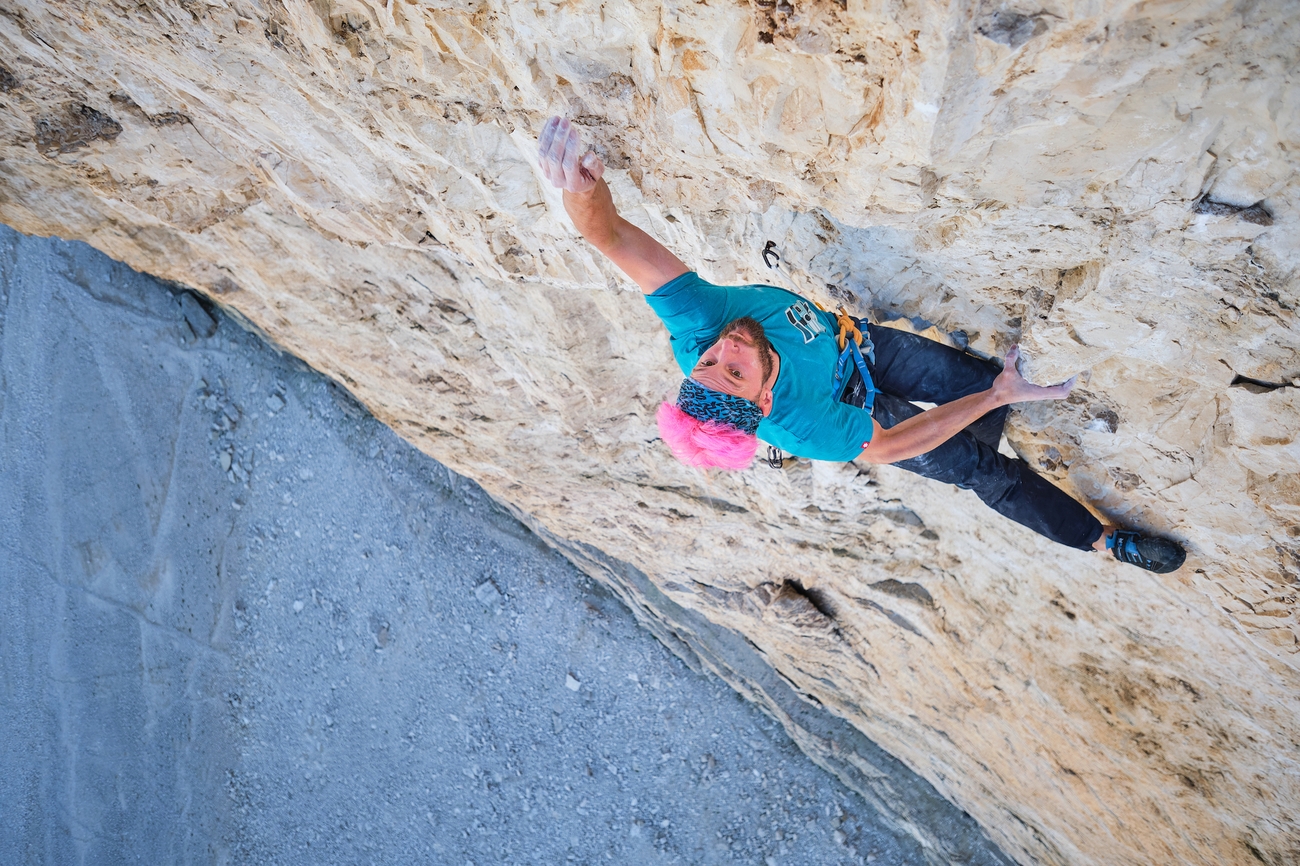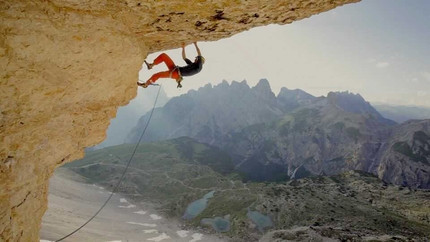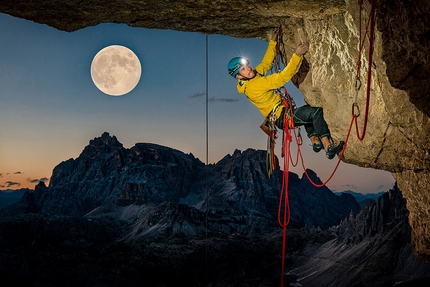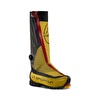Swift Tre Cime di Lavaredo double for Jernej Kruder: Pan Aroma and Spanish route

 1 / 5
1 / 5 Luka Tambača
Luka Tambača
Despite always seeming so imposing and exposed, the great roof of Cima Ovest has always attracted me. In 2018 I paid my first visit to Alexander Huber's 2001 masterpiece Bellavista with Roger Schäli. Back then, I wasn't ready mentally for such exposed climbing on pegs, but I learnt a lot and I knew that I just need a little bit of experience to feel more comfortable. Time passed and I got way more experienced. I returned last July, and within four (not full) days, I managed to send Bellavista. It was my main summer objective, and even though I liked the idea of attempting Alex's 2007 variation Pan Aroma, I never returned.
This year I had similar plan. I wanted to climb as many styles as possibile, ideally all condensed into one hard multipitch. The most obvious project was Panaroma, but on my first visit to the Tre Cime di Lavaredo, I happened to try Dave Macleod's Project Fear, which shares the last hard pitch of Pan Aroma. I managed to climb all the lower pitches, except the really hard one, and for various reasons I also didn't go all the way to the top.
I returned few day later with Hannes Puman. He was feeling a bit ill, so our goal that day was to check out the long roof pitch - me on Pan Aroma and Hannes of Bellavista. The conditions were terrible, but nevertheless we both managed to do all the moves on our respective projects. At this point I knew all the hard sections of Pan Aroma, and all I had to do was find a partner. While I've had trouble with this in the past, luckily this time it wasn't too difficult. A few days later I tied in with Mirco dell'Osta, who had belayed me on my send of Bellavista last year and who had also sent the route a few days after me.
Our plan was simply to try the hard pitches one more time, but the flow was just too good and I reached the anchor on my first go. On the next pitch though, my foot suddenly slipped. I pulled myself back up and climbed to the next anchor. Another failed attempt was in the waiting. I barely managed to find enough power to get over the last hard section. I got cramps, and I was honestly a bit afraid of the next 2 pitches (6c, 6c+). Luckily those are a bit overgraded and the protection is super good. We continued upwards swinging leads, and very quickly we reached the top of Cima Ovest with Pan Aroma in the bag. This route doesn't get many repeats, and sending it fast means so much to me.
I returned to the Tre Cime the next weekend, this time with Felix Sattelberger and the photographer Luka Tambača. I wanted to try Project fear and take some photos from the roof, but honestly, I was too attracted to the Spanish route that I planned to try at the end of the month anyway. On Saturday, the 3 of us reached the base of Cima Grande. I started to climb the first 6b+ pitch. I reached the ledge, the difficulties were already close to the grade, but the real anchor seemed much higher. Felix reached me and started to climb; there was a line of bolts, but actually all of them were missing. He therefore decided to jumar up a rope that was fixed to the proper anchor of 6b+. I followed and the difficulties felt way over 7a/b, plus the rock was extremely chossy. Now though we were finally at the proper belay. I led the 7a+ and had to fight. Indeed, I started fighting real hard, because I really didn't want to fall on the almost 50-year-old, rusty 8mm bolts. At one point I even had to grab a quickdraw for a second! Now were were finally at the crux pitch. We worked it and I managed to send it second go. However, since I'd failed on a previous pitch, we decided to retreat and return the next day.
The next morning we woke up at 6am and I guess we started climbing at around 8. I decided to try the "original" 6b+ pitch a bit further to the right. Evidently this was the correct decision, but the quality of the rock and the grade were completely different from what I had expected. Once again, I finished on a ledge slightly below the original belay, and this already felt like 7a/b. Luckily the short connecting pitch was easy, but still somewhat chossy. I seconded the second 7a+. At this point we'd lost lots of energy and time, but I was still motivated. Not even a slip from the last crux could stop me. After a short rest I tried again and sent this pitch, too.
But I guess that's where the route really started. Felix was tired and he had to resort to some aid climbing to get past the chossy 6c. Me following wasn't a big problem, but nevertheless it wasn't super easy. I now considered aiding the 7c pitch, just to check it out first, but then decided to go all-in and try the onsight. It was one of the biggest battles of my life. After the first crux I realised that I needed some cams. Resting on a jug, I hauled up some gear on my tag line. I placed a cam and continued upwards. Above me I could see another old rusty bolt, and almost 10 meters to the next anchor. I gave it all I got in order not to fall on the last slabby crux! Luckily, the next 7c pitch was easier and I seconded this. At least two grades easier in my opinion, plus the gear here was good. Closer to the top, the rock quality improved, but not the pro. We swung leads slowly and at 9 pm we reached the summit. At 10 we were down at the car, and at 4 am I was happily back home in Slovenia. I feel my mind is getting stronger and stronger for big wall climbs, and I can't wait to see what the future brings.
by Jernej Kruder
Kruder thanks his sponsors Ocun Climbing, SCARPA



 Copia link
Copia link




























